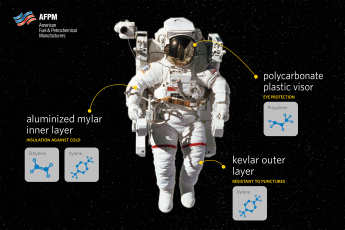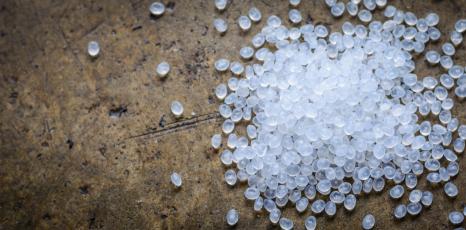It’s that time of year for one of the largest (un)official American holidays – Super Bowl 52! Family and friends come together to see one of the most watched American television broadcasts of the year. Did you know that petrochemicals play a key role in this main event? Let’s start with performance. High performance apparel has become commonplace in the world of football and athletics overall. Whether it is moisture wicking, thermal tech or compression fabrics, the root of these apparel advancements lies in synthetic fabrics. Polyester (made from building block petrochemicals like ethylene and xylene) is the most common synthetic material used in performance apparel. One of its best functions is its ability to pull sweat away from the skin to the exterior of the clothing. And what about safety? Advancements in sports equipment are often made with safety in mind especially with an eye on reducing the number of concussions. Football helmets are made from polycarbonate (a type of plastic) shells due to its high strength and low weight. Padding inside the helmet is made of a combination of polyurethane foams (made from ethylene and toluene as starting materials) while the chin straps and cup are made of polyester. Face guards are often made of plastic-coated steel and the helmet itself has multiple paint coatings (made from petrochemicals). Petrochemicals also play a role in the protective padding worn by players. Most shoulder pads are made of shock absorbing foam material with a hard outer plastic shell (made using petrochemicals). Hip and tailbone pads are made using high density polyethylene which is a plastic made from the petrochemical ethylene as a starting material. Thigh and knee pads are made of petrochemical-based plastics and are inserted into pockets constructed inside the football pants to provide an additional layer of safety. And don’t forget about other uses of petrochemical-based products in the game. Uniforms aside, petrochemical-based products also are used in multiple places on the field whether it is the kicking tee, the football field markers used by the refs or the padding used around the goal posts. About half of all NFL teams currently play their games on synthetic turf which consist of “grass” blades often made from petrochemical based materials such as polyethylene (made from the petrochemical ethylene) and polypropylene (made from the petrochemical propylene). The turf requires minimal resources and maintenance while saving millions of gallons of water each year and eliminates the need for fertilizer. Petrochemicals are even revolutionizing the construction of the stadiums themselves, as our previous blog on the Minnesota Vikings' new stadium shows. Let’s give a big cheer for “petrochemicals” this Super Bowl.


